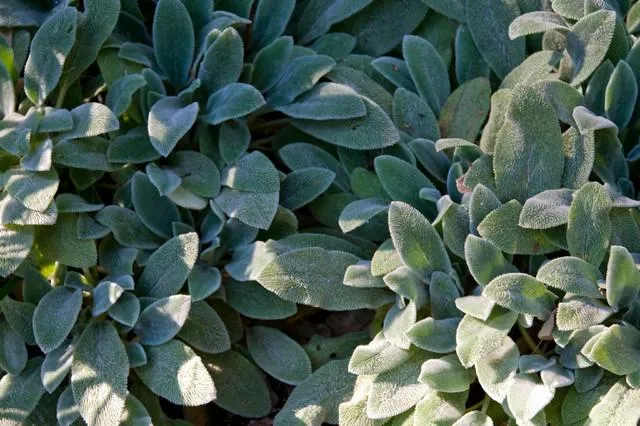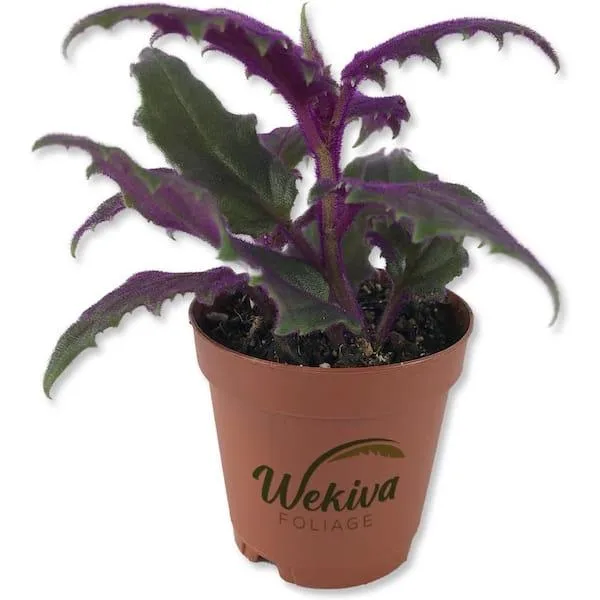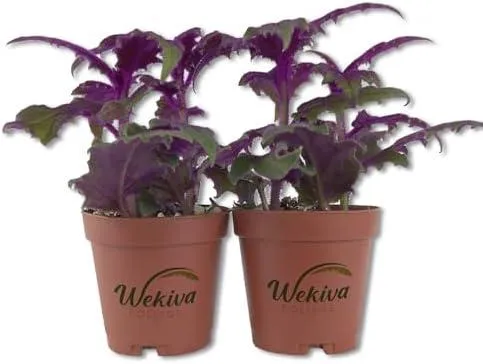All You Need to Know About Velvety Plants
When searching for “velvety plants”, it’s clear you’re looking for plants with exceptionally soft leaves. From my experience as an avid gardener, some of the most velvety foliage belongs to succulents and herbs. Let me fill you in on several top options as well as tips for caring for these ultra-soft plants.
Senecio rowleyanus – String of Pearls
Basically one of the trendiest succulents these days is the String of Pearls plant, or Senecio rowleyanus. Native to South Africa, its round blue-green leaves resemble strings of pearls and have an incredibly silky texture. When you run your fingers over a strand of pearls, they feel amazingly plush. Kind of soothing, if you ask me! This succulent thrives in bright, indirect light and should be allowed to dry out between waterings.

Kalanchoe tomentosa – Panda Plant
Moving on to another top choice for velvety foliage – the Panda Plant or Kalanchoe tomentosa. As the name suggests, its leaves resemble the black and white fur of a panda bear. But their texture is out of this world – thick and woolly to the touch. I’ve had one on my kitchen windowsill for years now and still find myself rubbing its leaves multiple times a day when stressed. The plant does best in medium light and prefers drier soil. Just don’t overwater this cute, cuddly plant!
- Coleus – With hundreds of varieties in every color imaginable, Coleus are prized for their veined, lush leaves. Some cultivars like “Coloratus” have a plush, suede-like surface. Give them shade to partial sun.
- Lamb’s Ears – As soft as a lamb’s ear itself, Stachys byzantina forms a thick, fuzzy mat. Great for groundcover in Zones 5-9 with average moisture.
- Sedum – Many Sedum species have thick, fleshy foliage perfect for touching. Try ‘Angelina’ with rich bronze leaves or blue-leaved ‘Neon.’ Terrific succulents for sunny spots.
Propagating Velvety Plants
If you fall in love with a velvety plant, consider propagating it to share the plush pleasure. Succulents like String of Pearls and Panda Plant root easily from leaf cuttings. Simply lay trimmed leaves on dry soil, mist occasionally, and new growth should emerge within weeks. Coleus is another snap to propagate – just take 4-6 inch stem cuttings, remove lower leaves, and plant in potting soil. These sort of cute home projects are a fun way to nurture our green thumb skills, if you ask me!

Caring for Velvety Foliage
While velvety plants can add immense joy and texture to your indoor or outdoor space, they do require TLC to maintain their plush perfection. Here are some tips from my experience:
- Lighting is key – place in their preferred conditions for proper growth. Too much sun can scorch tender leaves.
- Water judiciously based on the plant. Succulents like drying out slightly while Coleus prefer consistently moist soil.
- Dust leaves regularly with a soft cloth or makeup brush to remove debris that could damage texture. Can you imagine sandpaper leaves??
- Prune leggy growth on plants like Coleus to encourage bushy habit and maximum soft foliage.
- Fertilize occasionally in spring and summer with a diluted, all-purpose formula like 10-10-10.
With a bit of TLC, velvety plants can provide tactile pleasure for many growing seasons. But do your research to select types suited to your climate and care abilities. Kind of a learning curve, right?! From my experience, once you’ve experienced the miracle of velour foliage, you’ll be forever addicted to its soothing textures.

An Unexpected Velvet Perennial
I’d be remiss not to mention another plush plant in my opinion – hostas! While not typically thought of for their foliage, some hosta varieties have remarkably velvety, almost suede-like leaves. ‘Sum and Substance’ has thick, blue-green leaves that feel delicious to stroke. You can grow hostas for years in woodland gardens or shady borders. They’re low maintenance and deer resistant too, which is awesome. So don’t sleep on these perennials if velvet vegetation is your jam!
In conclusion, whether you want a tactile indoor succulent or lush landscaping foliage, velvety plants offer unique sensory joy. Their ultra-plush leaves provide soothing satisfaction through sight and especially touch. Give String of Pearls, Coleus or Lamb’s Ears a whirl and bid your fingers indulge! But remember to respect each plant’s care needs to prolong your pleasure. Now get out there and start your collection – you won’t be able to keep your hands off these beauties, I reckon!

Key Facts About Velvety Plants
| Plant | Description | Care Level | Light Needs |
|---|---|---|---|
| Peperomia | Large variety of plants with velvety leaves. Great for terrariums. | Easy | Low to bright indirect light. |
| Bromeliad | Exotic looking plants with colorful leaves or bracts. Produces “pups”. | Easy | Medium to bright light. |
| Chinese Money Plant | Trailing plant with coin-shaped leaves. Tolerates low light. | Easy | Low to medium light. |
| Rubber Plant | Large leaves on sturdy stems. Air purifier. Tolerates low light. | Easy | Low to medium light. |
| Heartleaf Philodendron | Vining plant with heart-shaped leaves. Tolerates low light and humidity. | Easy | Low to bright indirect light. |
FAQ
- What kinds of plants have velvety leaves?
A bunch of different plant varieties have leaves that feel fuzzy or velvety, like French lavender, coleus, dusty miller, lamb’s ear, and sometimes peperomia. Their leaves have tiny hairs growing on them that give them that soft texture. - Why do some plants evolve to have velvety leaves?
Scientists think velvety or fuzzy leaves help plants in various ways. For starters, the hairs may protect the plant from losing too much water through evaporation. The hairs also provide some defense by making leaf surfaces difficult for insects to walk on. Additionally, the hairs likely help camouflage the leaves or parts of plants from being easily spotted by animals browsing for a snack. - Do velvety leaves feel the same to touch?
Nope, the texture can differ depending on the type of plant. Some leaves feel super soft and almost silky, while others are more like tiny brush bristles. And occasionally a plant will have a unique touch that’s tough to compare. The best way to find out is simply feel a variety of plants with fuzzy leaves and see which textures you prefer. - How can you care for velvety houseplants?
Most velvety plants need the same standard houseplant care – bright light, well-draining soil, and not too much water. You do want to be careful about overwatering since the fuzzy leaves can hold in moisture close to the stems. It’s always best to let the soil dry out a bit between waterings. You may also need to occasionally wipe down the leaves since dirt and dust can cling to the hairs. Overall they are pretty low maintenance as long as you meet their basic needs. - Do the hairs ever fall off?
Sometimes over time some of the tiny leaf hairs might fall out or wear away on plants that have had them for numerous years. But for the most part those fuzzy trichomes tend to stay attached. You’re more likely to lose hairs if the plant is damaged or undergoing stress. Otherwise the hairs should remain to help carry out their jobs of protecting the leaves. - Are there any downsides to velvety leaves?
I guess one potential drawback is that those fuzzy trichomes could possibly trap more dust and dirt that’s difficult to remove. You may find yourself needing to wipe plant leaves more regularly. And the hairs may also slow growth a bit when compared to non-fuzzy plants. However, the advantages of moisture retention and pest resistance seem to outweigh the minor cleaning inconveniences for most gardeners and homeowners.
